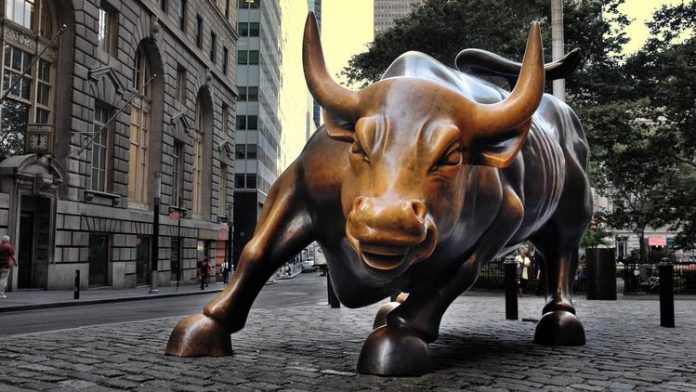Stocks are rising again today, keeping September in the “green” as market leaders Apple (NASDAQ: AAPL) and Tesla (NASDAQ: TSLA) finally give up some of their gains.
The Dow, S&P, and Nasdaq Composite are trading slightly higher despite a deflation among the top stocks.
Underperformers like Coca-Cola (NYSE: KO), Intel (NASDAQ: INTC), and IBM (NYSE: IBM), meanwhile, are surging. The three stocks – along with their respective peers – are still down on the year, however.
But overall, a rotation into the less popular sectors looks to be starting once more.
It’s been an unusual morning for traders, marked by a rise in the major indexes even though a new batch of economic data – U.S. private payrolls – came in worse than expected. Dow-polled economists estimated a private payroll gain of 1.17 million in August.
ADP believes only 428,000 were added by comparison.
That’s a significant difference, but one that bulls don’t seem to care about. ADP severely underestimated the last two jobs reports.
The August payroll tally from the Bureau of Labor Statistics (BLS), due out Friday, could make it three in a row.
“This [ADP estimate] makes Friday’s BLS report really interesting because not only was the private sector BLS July print 1.46 million but the August estimate is 1.29 million, well different and well above than what ADP has said,” said Peter Boockvar, chief investment officer at Bleakley Advisory Group.
Investors seem to be growing wise to the fact that ADP’s lost its touch – something the data analytics firm claims is completely untrue.
Analysts have claimed in the past that the BLS is (unintentionally) reporting inaccurate numbers, which will eventually be revised down the road. The revisions should make the ADP estimates look more in-line with what’s really transpiring in the labor market over time.
Regardless, the market has turned somewhat of a blind eye to ADP’s payroll reports as a result of the recent payroll misses. You can only “cry wolf” so many times.
Mike Wilson, Chief U.S. Equity Strategist at Morgan Stanley, cautioned bulls that they may be in for some turbulence independent of the Friday jobs numbers.
“I remain very constructive over the next 12 months,” said Wilson enthusiastically.
“I think we’re a little bit overcooked […] It’s impossible to try to time these types of corrections. It would not surprise me if we got a 10% correction, but it wouldn’t be surprising if we didn’t, either. We’re in a bull market.”
A move higher from here, while certainly possible, continues to appear improbable given the massive rally that’s already occurred. Both technical and fundamental traders have plenty of evidence to suggest a correction is right around the corner.
Take, for example, the current S&P 500 Forward Price/Earnings (P/E) Multiple, which hit a record high today (27.02x). In doing so, it officially surpassing its previous high from the peak of the “Dot Com” bubble (27x).
This could mean one of three things:
- Stocks are overvalued.
- Analysts are too pessimistic about predicted future earnings.
- A combination of both.
Back in 2000, the market was severely overvalued (option 1). Given the persistent economic strife in the U.S., it seems like that could be the case this time as well. If it is, expect a major equity downturn.
Or, the economy could surprise us all and spur on a rapid “V-shaped” recovery (option 2), resulting in a bull market continuation.
And if it’s a combination of both (option 3), the market would still be due for a correction, albeit not as much of a correction if stocks were simply overvalued (option 1).
In the end, the S&P 500 Forward P/E Multiple paints a fairly grim picture for bulls. Like many analysts have said, the market could absolutely punch higher.
But the current pressures weighing on stocks are unprecedented. That, combined with a crucial presidential election later this year, could lead to an ugly bearish reversal at a moment’s notice.
Even if bulls aren’t willing to admit it, or are simply too confident to see it coming.








